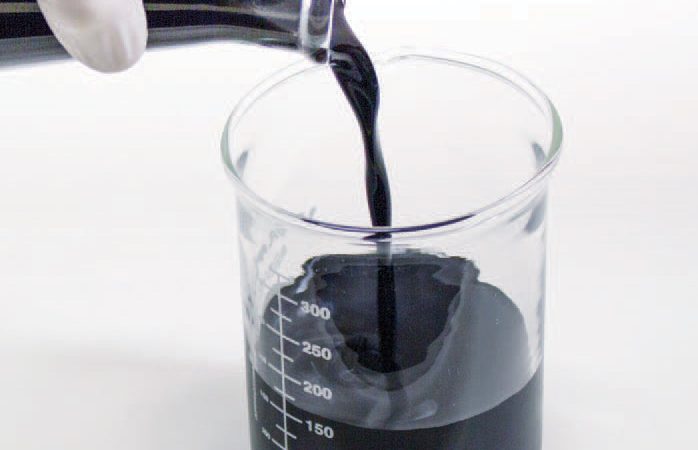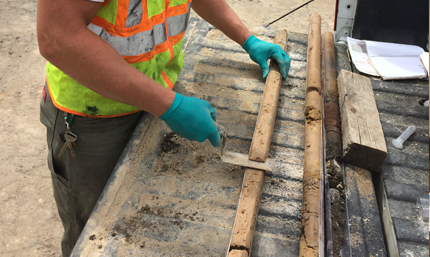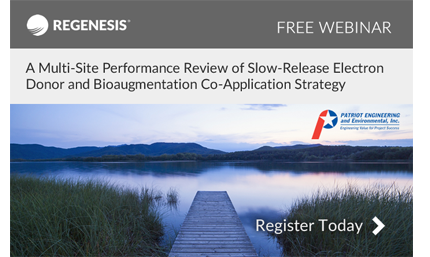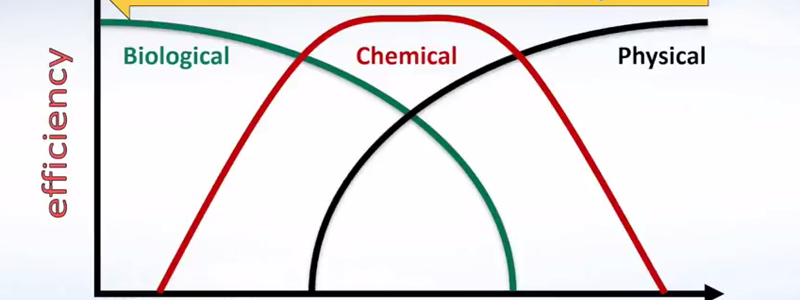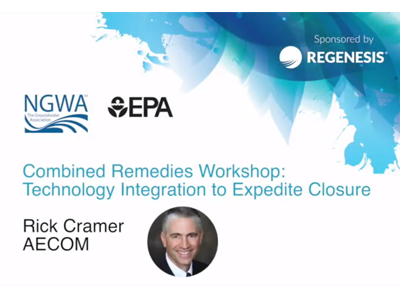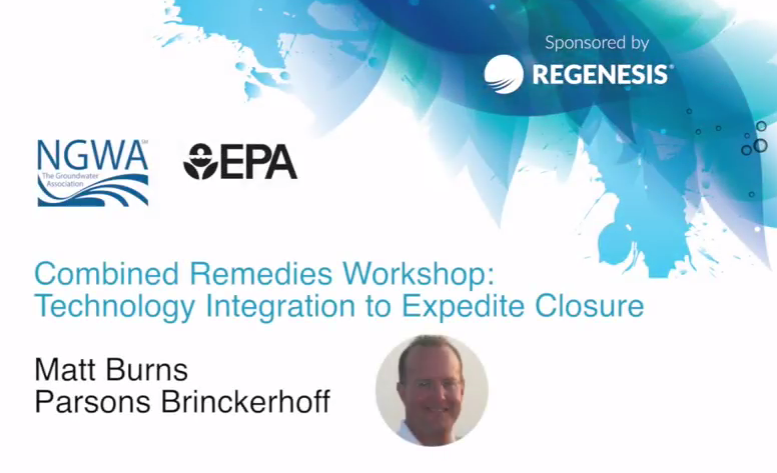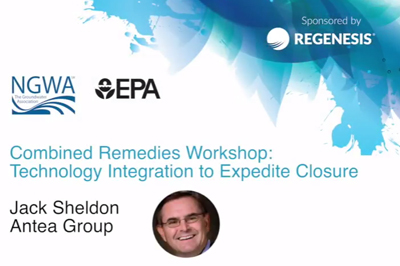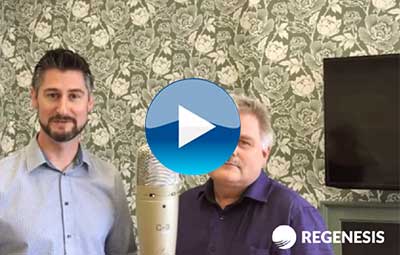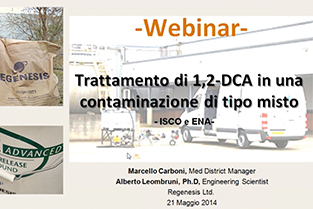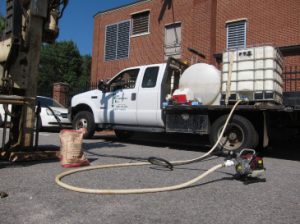EU Webinar: Field Performance of PlumeStop Liquid Activated Carbon
First broadcast: 30 November 2016
Speakers: Dr Jeremy Birnstingl
In this webinar – the third in a series of presentations on the technology – Dr. Jeremy Birnstingl focuses on PlumeStop’s performance in the field.
- Performance analysis of technology usage to date, reviewing aggregate data from a range of sites across the United States and Europe.
- Lessons learned from PlumeStop applications in multiple geological settings, including the importance of accurately targeting contaminant flux zones.
- Laboratory analysis of PlumeStop’s capacity to capture perfluorinated compounds, PFOA/PFOS.
- Frequently Asked Questions, and the opportunity for the audience to ask Dr. Birnstingl questions.
View the webinar recording
Accelerated Biodegradation of Chlorinated Contaminants Using In Situ Liquid Activated Carbon
In order to provide more insight into accelerated biodegradation of chlorinated solvents using Liquid Activated Carbon, REGENESIS is excited to welcome as a first-time guest webinar presenter, Matthew Valentine, P.G., LRS. Mr. Valentine is Vice President and Project Manager for the environmental engineering and consulting firm Woodard & Curran. He has over 26 years of experience in the environmental industry. During the presentation, he will cover the pilot test and early full scale implementation of a project in South Carolina using the REGENESIS Technology PlumeStop® Liquid Activated Carbon. The contaminated site includes a TCE plume that is over 1,700 feet beyond the source area, and less than 1,000 away from a sensitive receptor.
This presentation covers:
- PlumeStop application process, being applied with a slow-release electron donor and bioaugmentation culture to achieve accelerated biodegradation of chlorinated solvents in conjunction with the enhanced reductive dechlorination treatment technique
- Initial results from a pilot study in which PlumeStop was selected as the remediation technology
- Full scale implementation of PlumeStop at the site
View this free webinar
A Multi-Site Performance Review of Slow Release Electron Donor and Bioaugmentation Co-Application Strategy
First broadcast: 25 August 2016
Speakers: Steve Sittler, P.G., Senior Project Manager, Patriot Engineering and Environmental
A strategy for co-application of electron donor and bioaugmentation, as well as a multi-site performance review drawing lessons learned for achieving best results, will be the focus of this webinar. We are pleased to have with us Mr. Steven Sittler, P.G., Senior Project Manager at Patriot Engineering and Environmental. Mr. Sittler has more than 30 years of technical experience in applied hydrogeology, with specialized experience in remedial strategy development and implementation.
Mr. Sittler presents strategies for success using co-application of electron donor/bioaugmentation. Recent technological advancements have faciliated a transition towards co-application of controlled-release electron donors and bioaugmentation cultures of Dehalococcoides sp. (DHC). These advancements, including pH neutral electron donors and improved understanding of the viability of DHC, have allowed changes to the old way of thinking of waiting to bioagument. The result is a more aggressive approach with a significant increase in enhanced reductive dechlorination (ERD) rates. Use the form on this page to view this webinar recording today.
View the webinar recording
Combined Remedy Synergies – Quantified Performance Benefits
First broadcast: 26 January 2016
Speakers: Jeremy Birnstingl, VP of Environmental Technology at REGENESIS
Today, the variety of remediation technologies available is a direct reflection of the variety of performance characteristics they each present, be it in the balance of achievable cost vs. time, the degree of intrusion necessary for their furtherance, their optimum concentration range for maximum efficiency, or their suitability to a given geological, hydrological, or geochemical setting.
In this presentation originally given at a workshop presented by NGWA, US EPA, and REGENESIS®, Jeremy Birnstingl, VP of Environmental Technology at REGENESIS, discusses:
- The inherent shortcomings of the widespread single-technology design predisposition in the remediation industry today
- The physicochemical principles favoring the use of integrated remedial approaches
- Remediation that is designed to secure efficiency and cost benefits to all stakeholders
View this free webinar
Why Focus on the Geology? by Rick Cramer, AECOM
First broadcast: 26 January 2016
Speakers: Rick Cramer, Director of Science at AECOM
Subsurface geology defines the “plumbing” (permeable pathways) that largely controls the subsurface heterogeneity responsible for groundwater flow and contaminant migration at complex sites. A focus on the geology is imperative for understanding fluid migration in the subsurface. The 2013 National Research Council study regarding complex contaminated groundwater sites concluded that, due to inherent geologic complexities, restoration of these sites is likely not achievable. It is time for the environmental industry to focus on modern geologic methods to understand the subsurface. This presentation shows how existing data and established geologic analyses can move groundwater remediation projects forward through an improved, quantitative conceptual site model.
This presentation was originally given by Rick Cramer, Director of Science at AECOM, at a workshop presented by NGWA, US EPA, and REGENESIS®. We are excited to announce that a recording of this presentation is now available.
View this free webinar
Effective and Sustainable Combined Remedies using Single Application of Multi-functional Ammendments
First broadcast: 26 January 2016
Speakers: Matt Burns, Practice Leader WSP | Parsons Brinckerhoff
The combined remedy approach to groundwater remediation optimizes contaminated site cleanup as measured by technical efficacy and sustainability. Regardless of the potential for improving site cleanups, however, there are still obstacles limiting the implementation of combined remedies. These obstacles can often be circumvented by employing multicomponent and multifunctional remedial amendment formulations delivered with a single application. Case studies are presented that demonstrate efficacy of this combined remedies approach. We are excited to announce that a recording of this presentation is now available.
This presentation was originally given by Matt Burns, Practice Leader at WSP | Parsons Brinckerhoff, at a workshop presented by NGWA, US EPA, and REGENESIS®. We are excited to announce that a recording of this presentation is now available.
View webinar recording
Environmental Liability Transfer Sites: Well-Suited to Combined Remedies by Jack Sheldon, Antea Group
First broadcast: 26 January 2016
Speakers: Jack Sheldon, Senior Consultant at Antea Group
In this presentation originally given at a workshop presented by NGWA, US EPA, and REGENESIS®, Jack Sheldon, Senior Consultant at Antea Group, discussed how environmental liability transfer sites are generally well-suited to combined remedies due to the complexity and timeframes of this project type. In his presentation, he explores an example site in California that highlights the conceptual model development process, the evaluation of a range of remediation technologies, and the selection of technologies for source treatment, plume treatment, and polishing. A recording of this presentation is now available.
View the recording of this free webinar
In Situ Remediation of a 14 Million Litre Fuel Spill at a Former Military Base
Speakers: Gareth Leonard (REGENESIS) and Jonny Bergman (RGS Nordic)
Recording Available | In 1958, an explosion at a secret military storage facility in a remote part of Sweden resulted in more than 14,000m3 of fuel sweeping down the mountainside and contaminating the soil and groundwater of the surrounding forest. This, now derelict, site is scheduled for redevelopment to provide residential properties and local amenities including a school. RGS Nordic, a Swedish remediation specialist, has been commissioned with cleaning up the site. Regenesis and RGS Nordic have worked together to create an in situ remedial strategy to address free product and dissolved phase contamination in fractured bedrock, a boulder field and unconsolidated soils beneath the remains of the base and the forest beyond.
This project is an excellent example of the value of a step-by-step approach to remediation and demonstrates the ability of integrated in situ techniques to meet the challenges of variable contaminant concentrations, large scale and complicated situations including free product, a heterogenetic formation and difficult terrain, which would otherwise have relied on more expensive and disruptive traditional remediation methods. First broadcast: April 29, 2015
View webinar recording
Trattamento di 1,2-DCA in una contaminazione mista
First broadcast: 21.05.2014
In questo webinar viene illustrato un importante caso applicativo di trattamento in situ di un acquifero contaminato nel Regno Unito. Presso un sito industriale in attività è stato effettuato con successo il trattamento di un esteso plume inquinante che presentava concentrazioni superiori a 8.000 μg/L di dicloroetano (DCA), con contestuale presenza di idrocarburi e cloruro di vinile.
L’intervento è stato realizzato combinando Ossidazione Chimica in Situ (ISCO) con biodegradazione aerobica potenziata, co-applicando i prodotti RegenOx® e ORC Advanced®, utilizzando la modalità direct push ed effettuando un unico intervento di applicazione.
Il webinar illustra le caratteristiche del sito, sia in termini geologici e idrogeologici che per quanto riguarda le caratteristiche di contaminazione e la definizione del modello concettuale. Vengono poi analizzate le tecnologie di bonifica potenzialmente utilizzabili e viene fornita una descrizione di dettaglio delle tecnologie utilizzate e dell’intervento eseguito, analizzando in ultimo i risultati ottenuti.
Guarda la registrazione webinar
A Data-Intensive Review of Enhanced Reductive Dechlorination (ERD) Projects in the USA, for the Treatment of Chlorinated Solvents
First broadcast: 14 January, 2014
Speakers: Dough Davies (REGENESIS)
Recording Available | The use of ERD for contaminated site remediation is well-documented and offers a range of distinct benefits including: in-situ application, regulatory acceptance, minimal site disturbance, cost-effectiveness and well understood performance measurement.
This presentation is designed specifically to provide address common questions, including duration, cost, daughter product formation, and in-situ chemical oxidation (ISCO) options, through a systematic review of various on-going and recently completed ERD projects.

 Americas
Americas Europe
Europe Français
Français Deutsch
Deutsch Italiano
Italiano Español
Español